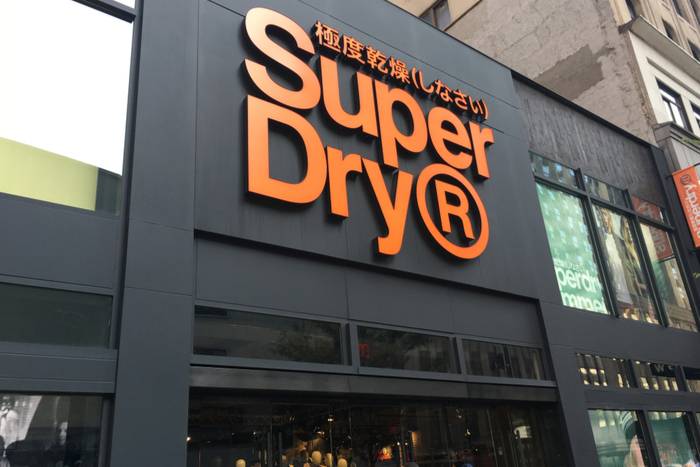Second-hand September is fairly new. With the rise in sustainable shopping options at an all-time high, retailers on the UK’s high streets are scrambling to find ways to be more eco-friendly, while some are turning a blind eye and promoting fast fashion.
Oxfam, the charity which aims to fight global poverty, introduced Second-hand September earlier this week to urge shoppers in avoiding new clothing purchases for the month of September, and buying second-hand products instead.
This prompts the question: can the resale market take over the fast fashion market?
Sustainable shopping may not be the most loved initiative for fashion retailers from a business perspective, but they should be prepared to support and advocate for any sustainable business practices in order to appeal to the growing environmentally-conscious market.
“Second-hand retail is just one way that consumers can use their shopping behaviour to make a difference”
Oxfam sustainable fashion expert Fee Gilfeather spoke to Retail Gazette about the environmental impact of fashion waste.
“The damage of fast fashion is far reaching – from extensive use of water in production to poor pay and conditions for workers,” she said.
“The carbon emissions from new clothing bought in the UK every month are greater than the emissions from flying around the world 900 times.
“The industry needs to change and second-hand retail is just one way that consumers can use their shopping behaviour to make a difference to the 11 million garments that go to UK landfill every week.”
Ben Whitaker, EMEA director at liquidation firm B-Stock, said: “Environmental pressure has been placed on retailers for some time now by consumers, legislation and campaigns.
He added: “More retailers are realising that their sustainable actions are having a direct effect on their reputation and brand image as more consumers make environmentally conscious shopping decisions.”
An example of this is Burberry’s new eco-friendly range made using regenerated fishing nets, fabric scraps & industrial plastic launched last month.

“Burberry, once a brand who only destructed overstock fashion now only recycles or donates its fashion after seeing a shift in consumer behaviour and attitudes,” Whitaker said.
“This month, as more pressure comes from Second-hand September, only savvy retailers are likely to embrace it as they understand that sustainable fashion will attract positive consumer brand attitudes and customers.”
Meanwhile, second-hand retailers are expanding – growing 21 times faster than the wider retail market over the past three years, according to research complied by GlobalData for online retailer Thredup.
Gilfeather said second-hand shopping was a “great way to shop sustainably”.

“We hope that by taking the challenge to break the cycle of buying new clothes for just one month, people who do second-hand September will be able to review their shopping habits and make more sustainable choices in future.”
Despite the growing importance of the resale market, online retailer Boohoo raised its full-year profit guidance earlier this week after its sales soared – illustrating the relevance of fast fashion.
However, Steve Gershik, chief marketing officer at computer software firm InRiver, said retailers would ultimately have to react to Second-hand September by “thinking carefully about how they can either; decrease their own environmental impact, or indeed, better communicate the sustainable practices they already have in place”.
He added that consumers today are more conscious of their decisions than ever before.
“Our recent research found that 20 per cent of consumers said they only buy sustainable products. What’s clear is that appetite for more sustainable options is growing; be it second hand, upcycled or direct from a brand or retailer,” he said.
Resale clothing or charity store shopping may have once been frowned upon, but with consumer attitudes shifting, there is no longer a stigma to buy second-hand items.

Harjinder Samra, head of retail at disabled children’s charity Newlife, told Retail Gazette: “Trends such as #OOOTD (Old Outfit Of The Day), where social media users post a picture of their look styled, vintage and excess stock finds, are constantly gaining in popularity.”
Georgina Wickman, a retail consultant at software company BJSS, agreed.
“Buying from a charity shop is a great way to support multiple causes but there are other options,” she said.
“Look at online retailers such as Depop and Ebay for unique cost-friendly items.”
“What’s clear is that appetite for more sustainable options is growing”
Meanwhile Sean Geaney, co-founder of sustainable clothing brand Wawwa, said it was up to the retailers to create products which last for a long time.
“It should now be a retailers’ responsibility to create garments with longevity in mind so nobody feels the need to donate to second-hand retailers,” he said.
“As retailers, we have to be realistic to consumer needs and wants. People still need underwear and socks etc that you can’t thrift.”
Matt Connelly, chief executive of dry cleaning service I Hate Ironing, agreed.
However, he said the best option would be to halt the purchase of clothing altogether.
“While this is a nice marketing angle from Oxfam it’s not a solution to the bigger issue. We need to move away from encouraging more textile consumption of any type,” he said.
“There’s no guarantee that these second hand items won’t end up on the rubbish dump like the other 92 billion tonnes of fashion waste.
“One way of tackling this is by taking better care of the clothes we already own so each item has a longer lifespan.”
Click here to sign up to Retail Gazette‘s free daily email newsletter


















